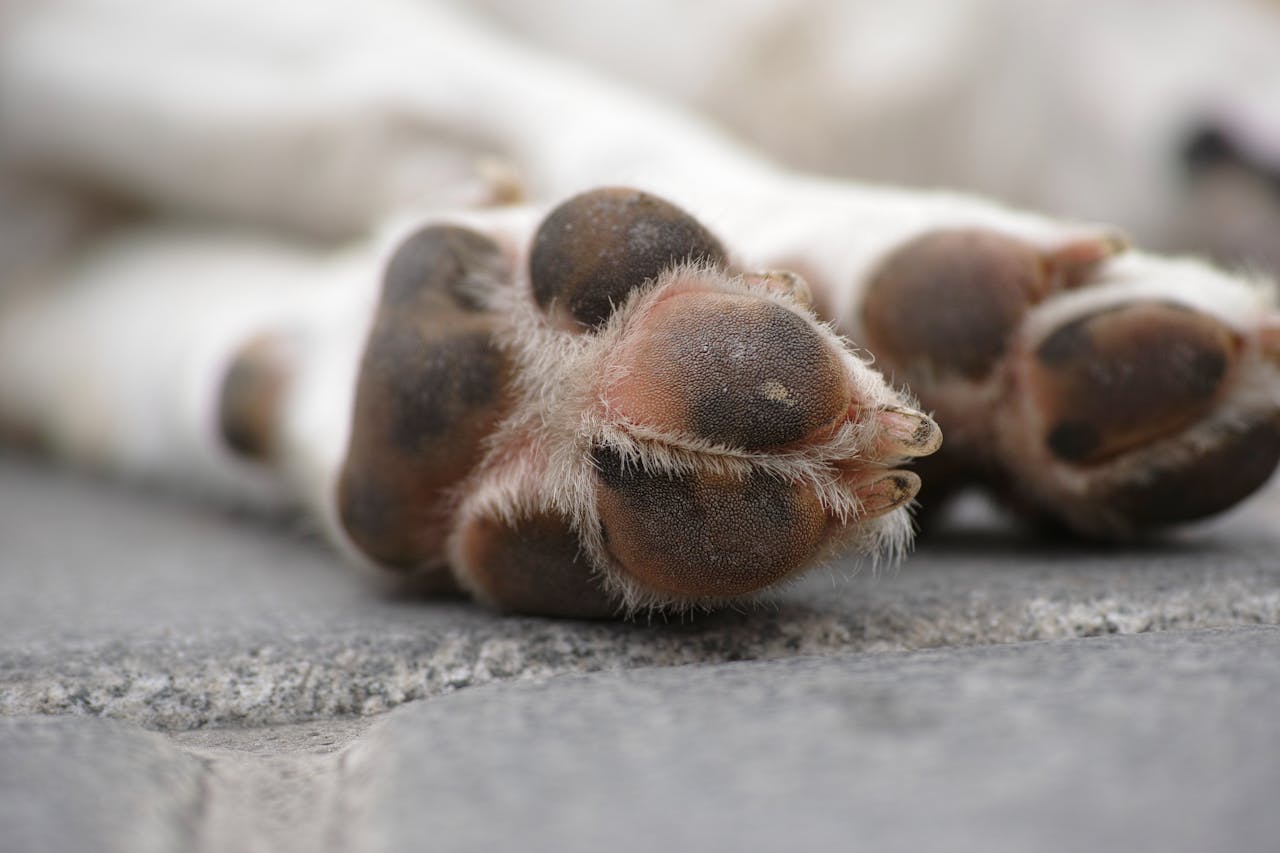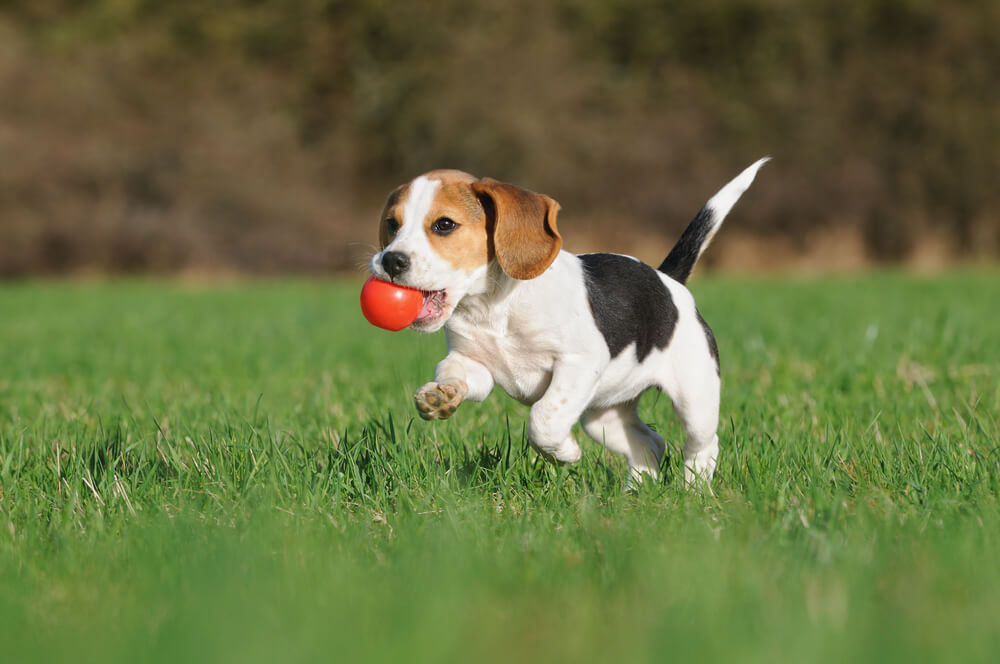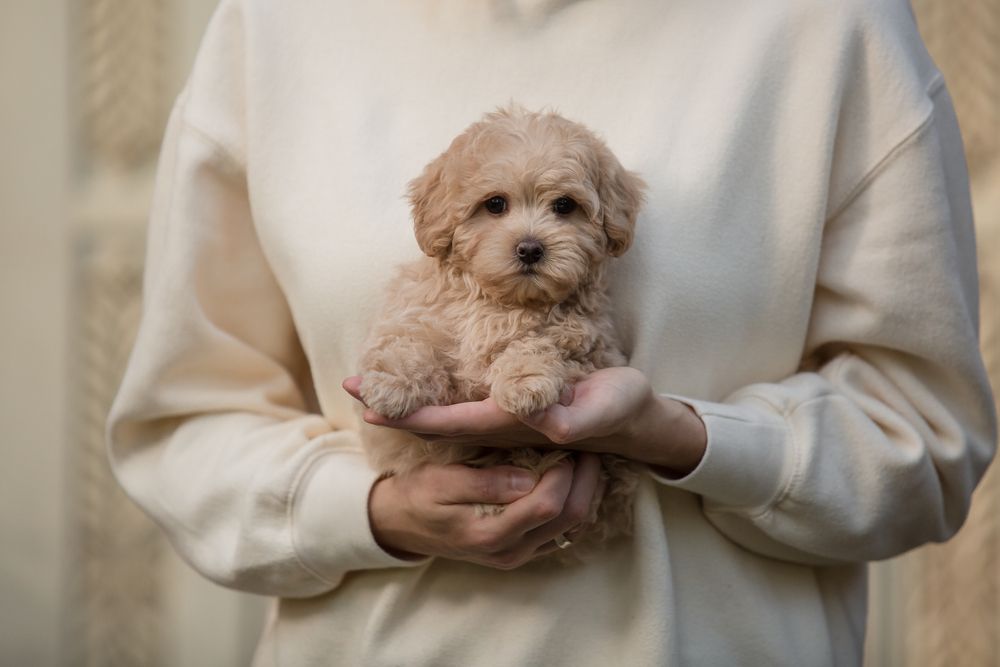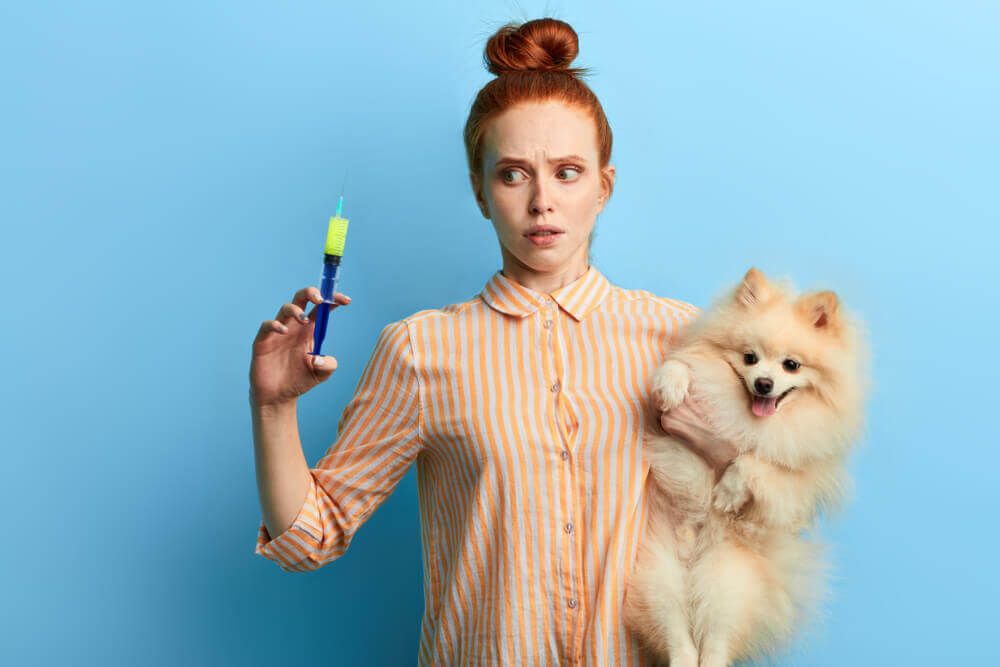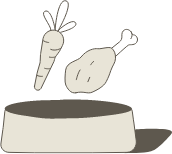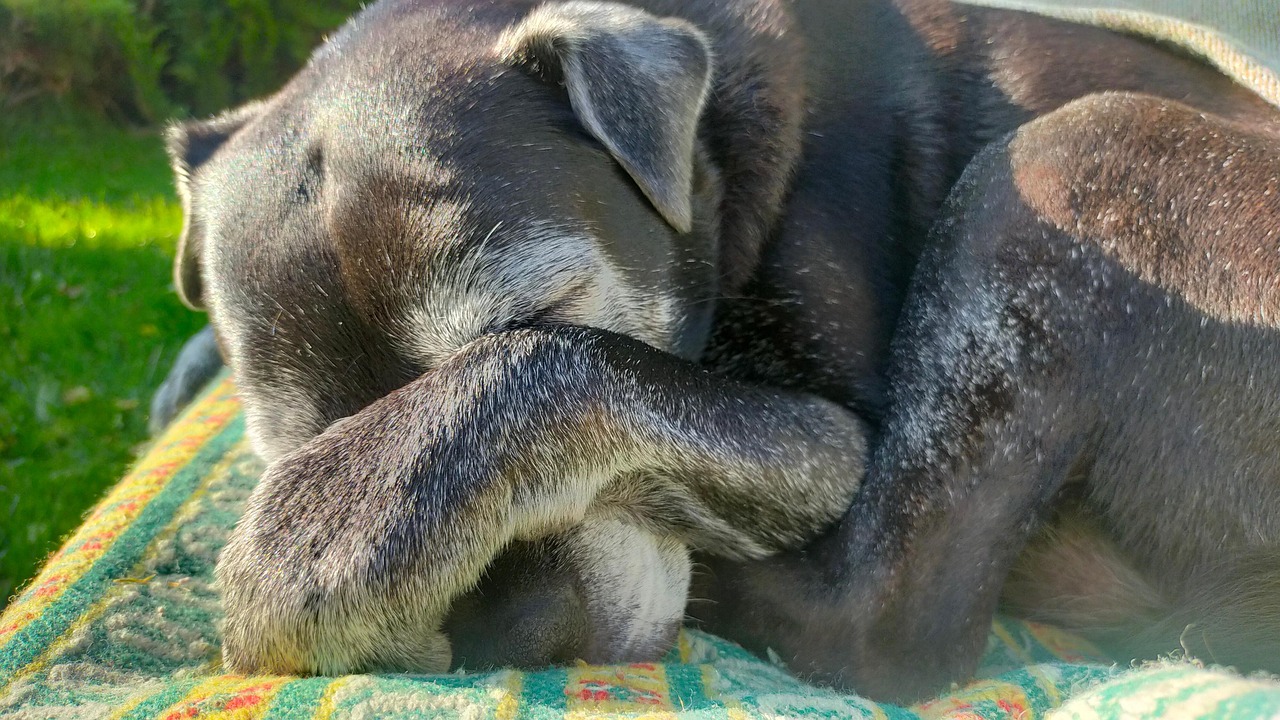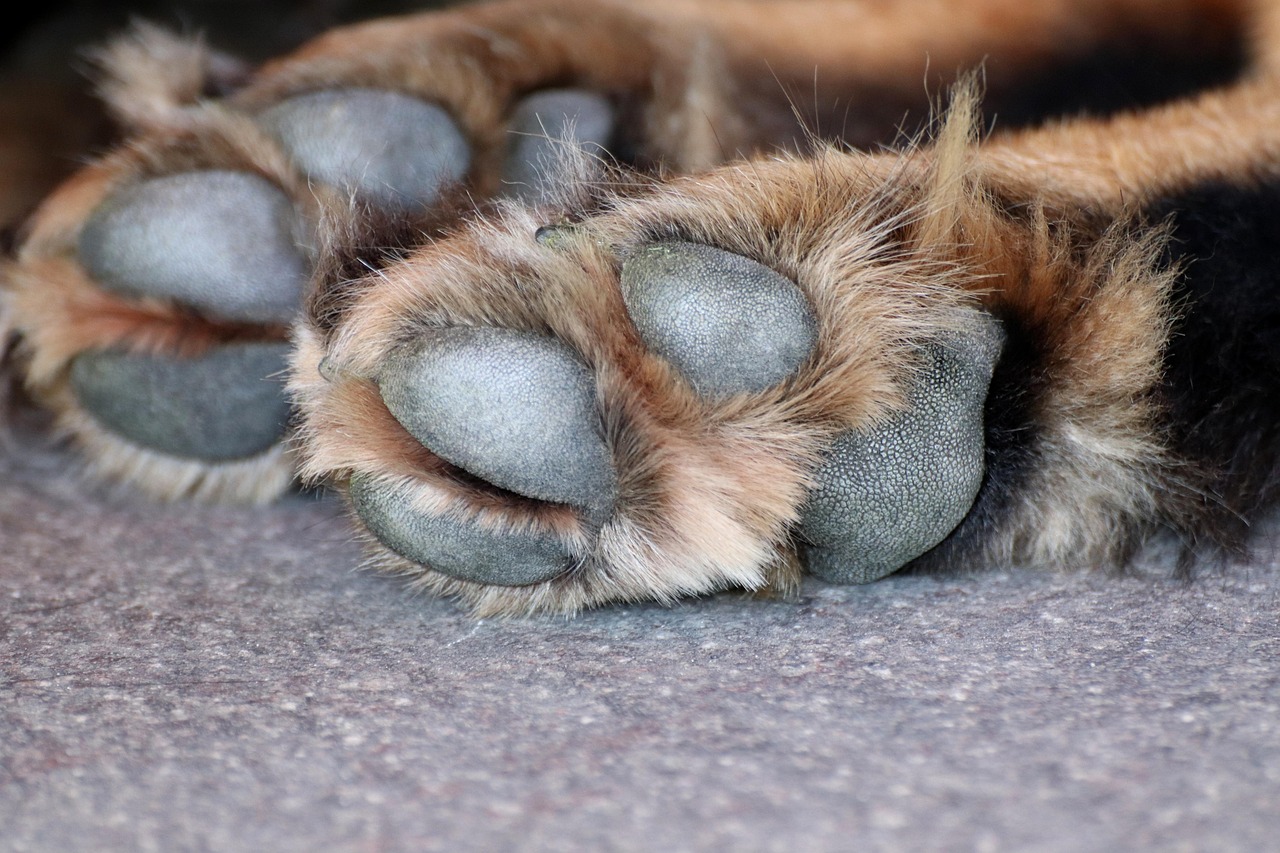Hey Ollie blog readers! We’re offering you an exclusive 60% OFF your starter box! Try now!
If your dog’s constantly licking or chewing at their paws, it might seem like a quirky habit at first. But when it starts happening all the time—along with redness, a funky smell, or discolored fur—it’s probably more than just a harmless behavior.
One of the most common reasons dogs obsess over their feet? A paw yeast infection.
Yeast infections in dogs’ paws are surprisingly common, especially in humid weather or allergy season. The area between the toes is warm, often damp, and an easy place for yeast to thrive. While not contagious, these infections can be really uncomfortable for your dog and frustrating for you if they keep coming back.
The good news is that yeast infections are treatable—and preventable—with the right care, hygiene, and nutrition. Let’s take a closer look at what’s actually going on when yeast takes over your dog’s paws.
What Is a Yeast Infection on a Dog’s Paws?
Yeast naturally lives on your dog’s skin. In small amounts, it doesn’t cause any trouble. But when something throws off the skin’s balance—like allergies, moisture, or a weakened immune system—yeast can multiply and lead to inflammation and infection.
On the paws, yeast tends to collect between the toes and around the pads. That area is warm, often damp (especially after walks or baths), and close to the ground where allergens, bacteria, and moisture build up. All of this creates the perfect environment for yeast to grow out of control.
The result? Itchiness, irritation, discoloration, and a distinct smell that many dog parents describe as “Fritos” or corn chips.
Understanding what yeast infections look like on the paws is the first step to treating the issue—and preventing it from becoming a recurring problem.
Dog Paw Yeast Infection Symptoms
Yeast infections on the paws don’t always look dramatic at first. In fact, the earliest signs are easy to miss—especially if your dog is just licking here and there. But once the infection sets in, the symptoms tend to become more obvious.
Here are some of the most common dog paw yeast infection symptoms to look out for:
- Constant licking or chewing at the paws, especially between the toes
- Redness or swelling in the paw pads or between the toes
- Brown staining on the fur from excessive licking (especially in light-colored dogs)
- A musty or corn chip-like odor coming from the paws
- Crusty, greasy, or flaky skin around the toes
- Thickened or darkened skin in chronic cases
- Sensitivity or discomfort when you touch their paws
These symptoms can affect one paw or all four. Some dogs may limp or avoid walking on hard surfaces if the infection becomes painful. If you’re seeing more than one of these signs—or if your dog keeps getting paw issues that won’t go away—it’s a good idea to check in with your vet.
Catching a yeast infection early makes treatment easier and helps stop it from spreading to other areas, like the ears or belly.
Dog Paw Yeast Infection Causes
So what actually causes yeast to overgrow on your dog’s paws? It’s not always a single trigger. Yeast infections tend to happen when several conditions come together: warmth, moisture, and a disruption in the skin’s natural balance.
Here are the most common dog paw yeast infection causes:
Allergies (Environmental or Food)
Allergies are one of the biggest contributors to yeast infections. Dogs with environmental allergies (like pollen or grass) or food sensitivities often experience inflammation in the skin. That inflammation can weaken the skin barrier, increase moisture, and create the ideal setting for yeast to grow.
Moisture and Humidity
Paws that stay wet after rainy walks, muddy yard time, or even a swim in the lake are at higher risk for yeast. Yeast thrives in damp, warm places—especially between the toes. If paws aren’t dried well after exposure to moisture, yeast can take hold fast.
Immune Imbalance or Antibiotics
Dogs with weakened immune systems may not be able to keep yeast in check. And while antibiotics are sometimes necessary, they can also disrupt the natural balance of bacteria and yeast on the skin, making it easier for yeast to overgrow.
Diet and Inflammation
A poor-quality diet can also contribute. Foods high in carbs, fillers, or artificial ingredients may promote inflammation and upset the skin’s balance. Some ingredients can even feed yeast, making the problem worse. That’s why fresh, anti-inflammatory meals made with whole, limited ingredients are a smart foundation for dogs with recurring yeast issues.
Dog Paw Yeast Infection Treatment Options
Once you know your dog has a yeast infection on their paws, the goal is simple: clear the infection and keep it from coming back. Treatment depends on the severity of the symptoms, but most dogs respond well with a mix of vet-prescribed care and supportive home routines.
Here’s what dog paw yeast infection treatment typically includes:
Veterinary Diagnosis and Antifungal Medications
A vet will usually confirm a yeast infection by looking at a skin swab under a microscope. Once diagnosed, treatment often starts with:
- Topical antifungal creams or sprays for direct treatment of the paws
- Antifungal wipes or medicated shampoos to reduce yeast across the skin
- Oral antifungal medications in chronic or severe cases
If allergies are a contributing factor, your vet may also recommend testing or an elimination diet to help pinpoint what’s triggering the reaction.
Cleaning and Paw Soaks
In addition to medication, keeping your dog’s paws clean and dry is a must. Daily paw soaks using vet-approved antifungal solutions—or even a diluted vinegar rinse—can help reduce yeast levels and soothe irritation.
A few tips for home care:
- Gently wash and dry your dog’s paws after walks, especially in wet or muddy conditions
- Avoid harsh soaps or over-scrubbing, which can damage the skin
- Trim fur between toes to reduce moisture trapping
Diet and Supplement Support
Yeast overgrowth often starts on the surface—but it’s connected to what’s happening inside your dog’s body, too. That’s why nutrition plays a key role in both recovery and prevention.
Feeding your dog a fresh, whole food diet with minimal carbs and no fillers can help reduce inflammation, avoid allergy triggers, and support a healthier skin microbiome.
Ollie gently cooked meals are made with limited ingredients, avoiding the common culprits that can feed yeast or aggravate allergies. Our Skin & Coat supplement adds omega-3s, zinc, and other nutrients that promote a strong skin barrier and calm inflammation—giving your dog’s paws the support they need to heal.
How to Prevent Yeast Infections in Dog Paws
Once your dog’s paws are healthy again, keeping them that way is the next challenge—especially if they’ve had yeast infections before. Prevention comes down to daily care, consistent nutrition, and knowing your dog’s risk factors.
Here’s how to help prevent yeast infections in your dog’s paws:
- Dry paws thoroughly after walks, swimming, or baths
- Wipe paws clean after exposure to allergens like grass or dirt
- Trim fur between the toes to keep the area dry and breathable
- Feed a high-quality diet that avoids common allergens and excess starch
- Manage environmental allergies through regular vet check-ins or targeted supplements
- Use paw soaks or antifungal wipes during high-risk seasons (like spring and summer)
Routine paw checks can also help you catch early signs of yeast before it becomes a full-blown infection. If your dog starts licking their paws more than usual, or if you notice a smell or color change, it’s a good idea to take a closer look right away.
Why Nutrition Plays a Role in Paw Health
It’s easy to think of yeast infections as just a surface-level issue—but what your dog eats has a direct impact on their skin, paws, and immune system. A poor-quality diet full of fillers, low-grade proteins, and artificial ingredients can feed inflammation and create the perfect conditions for recurring paw issues.
At Ollie, we believe skin health starts in the bowl. Our fresh food recipes are made with whole, real ingredients and no unnecessary junk. By focusing on high-quality proteins, healthy fats, and anti-inflammatory nutrients, we help support dogs prone to skin sensitivities, allergies, and—you guessed it—yeast infections.
We also offer a Skin & Coat supplement that delivers targeted nutrients like omega-3 fatty acids, zinc, and biotin to strengthen the skin’s natural barrier and promote overall paw health.
When you combine clean nutrition with smart care routines, your dog’s paws can stay healthy, itch-free, and ready for every adventure.
Keep Those Paws Happy and Healthy
A dog paw yeast infection can be uncomfortable, frustrating, and tough to manage if you don’t catch it early. But once you know what to look for—and how to treat and prevent it—you’re in a strong position to help your dog feel better fast.
From allergies to moisture buildup to diet, several factors can contribute to yeast overgrowth. Addressing the root cause, staying on top of paw hygiene, and feeding your dog a clean, supportive diet can go a long way in keeping infections from coming back.
If your dog’s been licking their paws more than usual, it might be time to take a closer look at their nutrition.
Try Ollie fresh dog food recipes to support paw and skin health—no fillers, no mystery ingredients, just real food that works.
Tagged As:
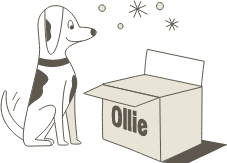
The nutrition your dog needs,
the food they want.

Enjoying our articles? Subscribe our Newsletters and get new articles directly to your inbox
You might also like
26 August 2025
8 MINS READ
Why Is My Senior Dog Shaking?
You’re sitting with your dog and notice something strange. Their body is trembling. It’s subtle at first, but then the shaking becomes more noticeable. Maybe it’s in their legs, or their who…
by Ollie Pets
26 August 2025
10 MINS READ
What to Do If Your Senior Dog’s Back Legs Are Collapsing
It’s one of the hardest things to witness. One day, your dog is trotting down the hallway like usual. The next, their back legs are trembling, giving out, or collapsing entirely. They might stum…
by Ollie Pets
26 August 2025
7 MINS READ
Dog Frito Paws: Why Do My Dog’s Paws Smell Like Fritos?
It starts out as a curious moment. You’re relaxing with your dog, they curl up next to you, and suddenly—there it is. That distinct, salty scent that smells exactly like corn chips or Fritos. …
by Ollie Pets
